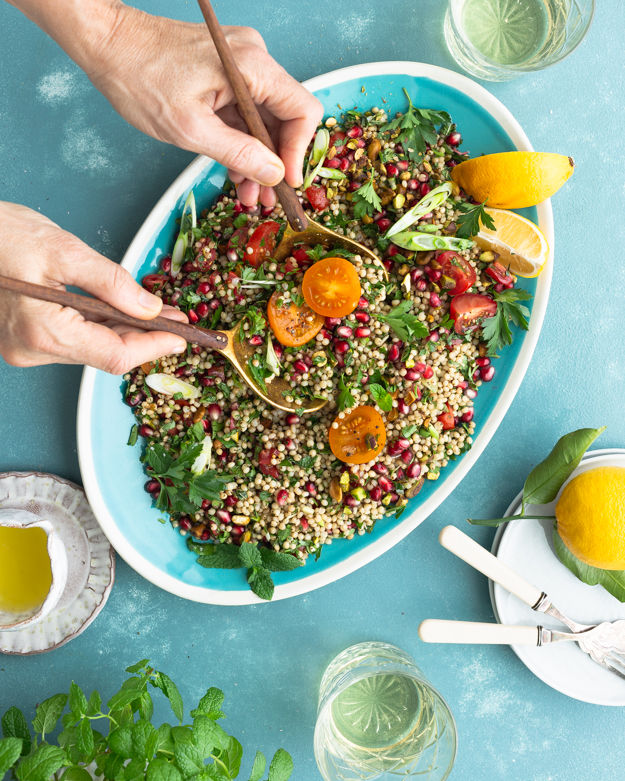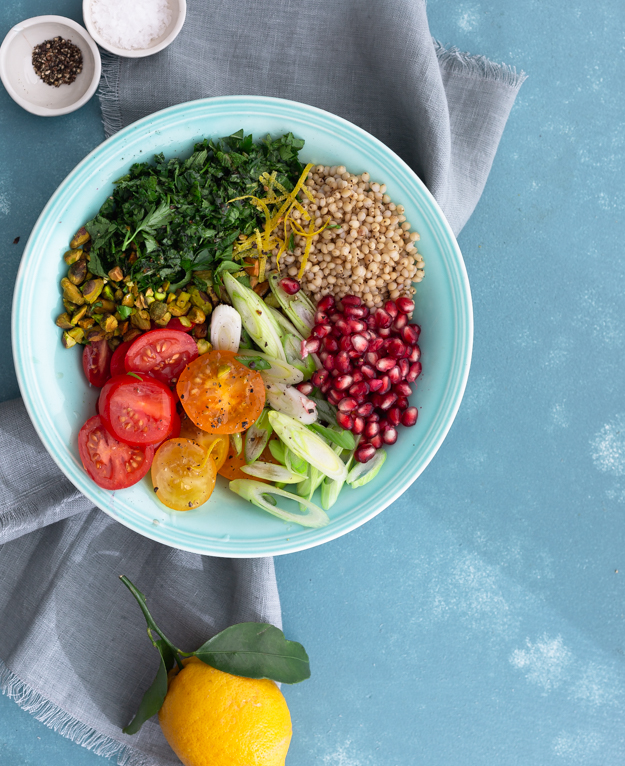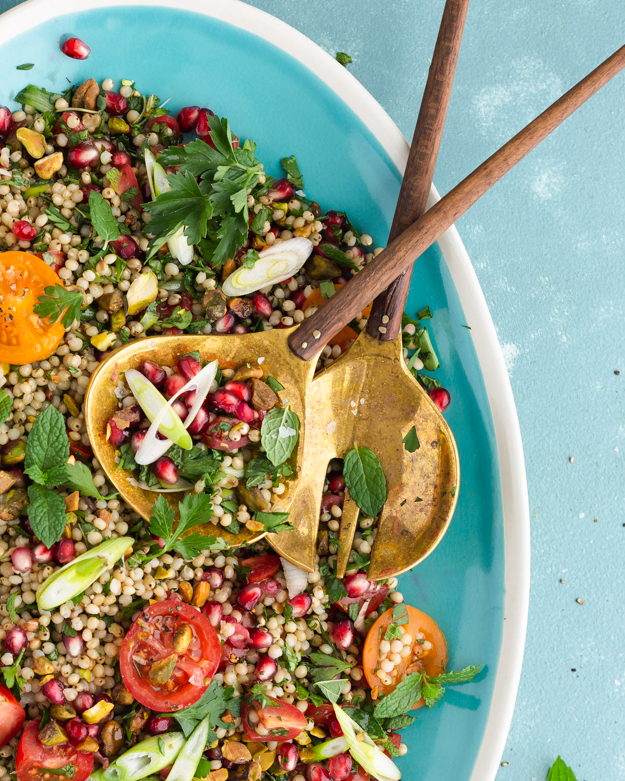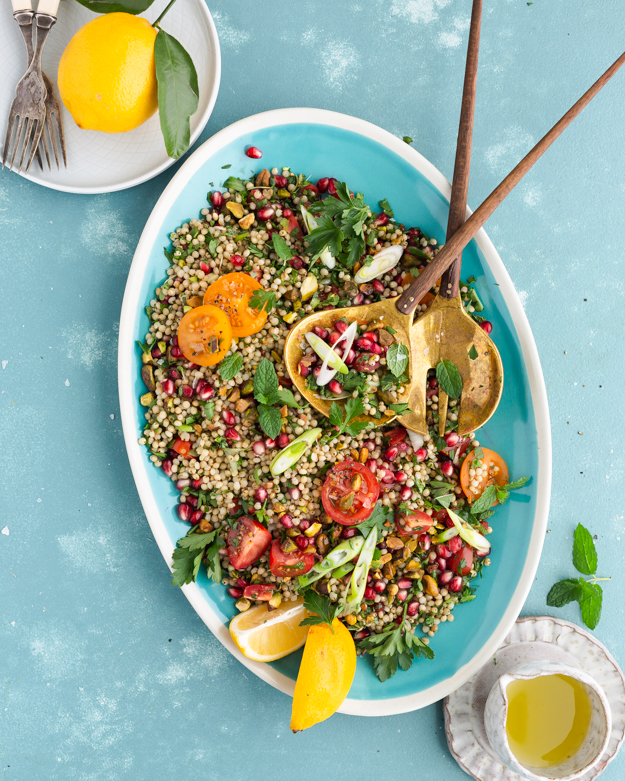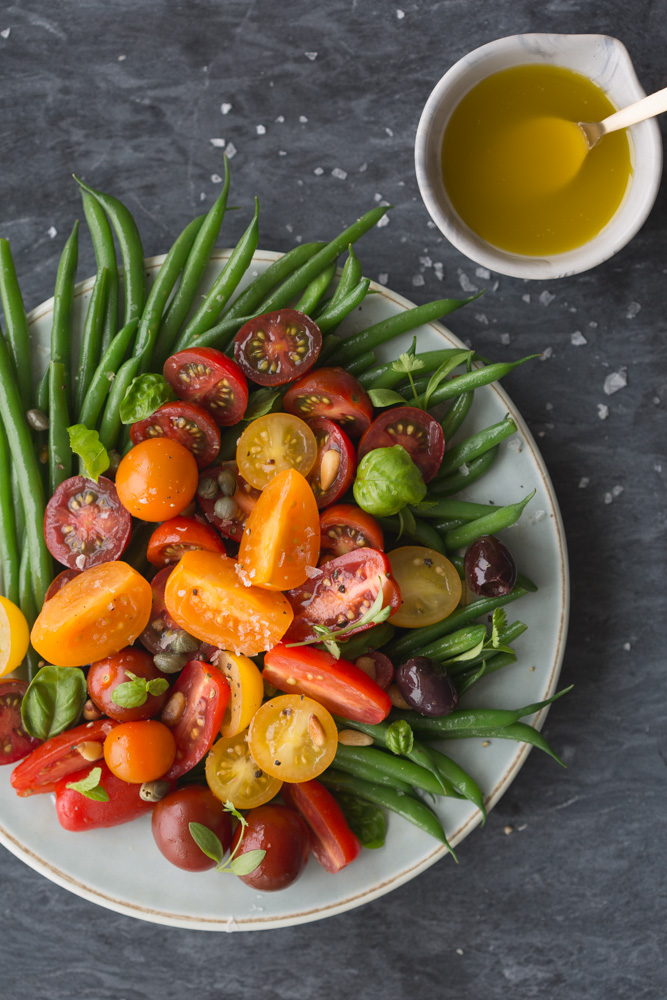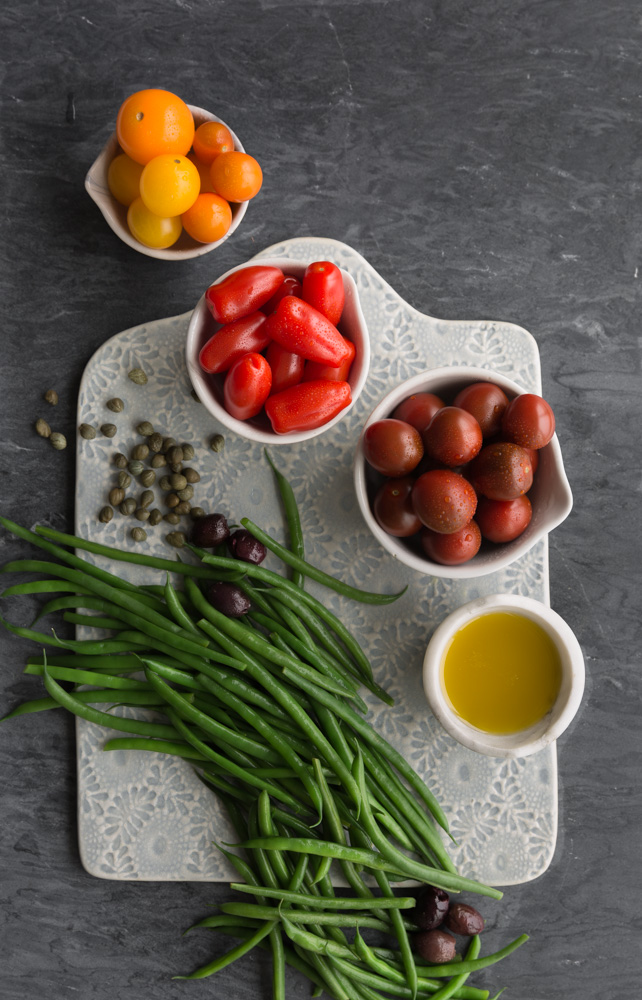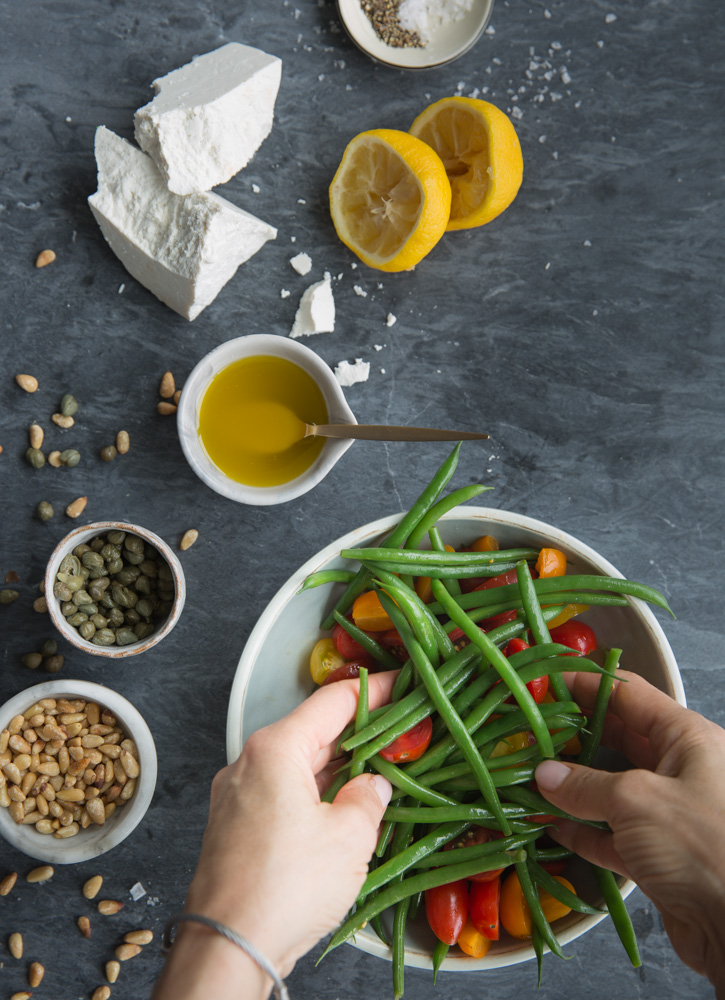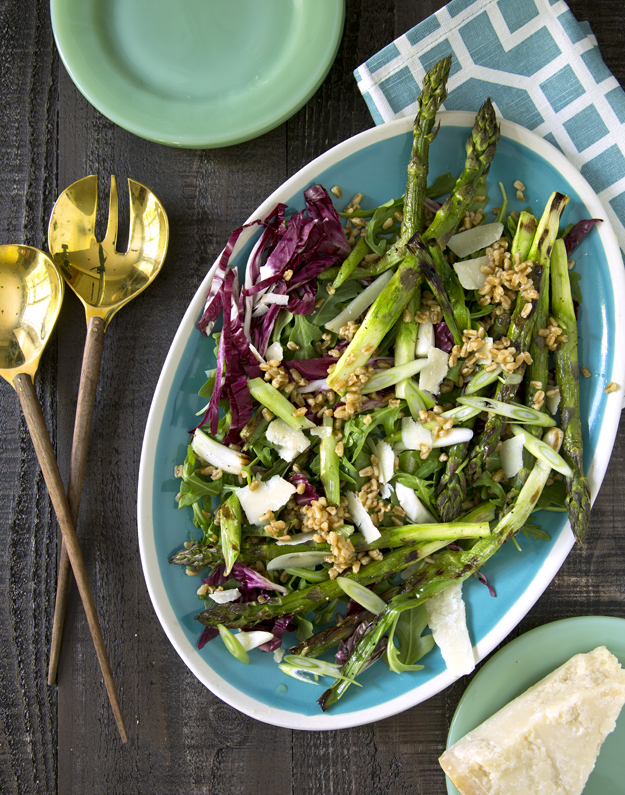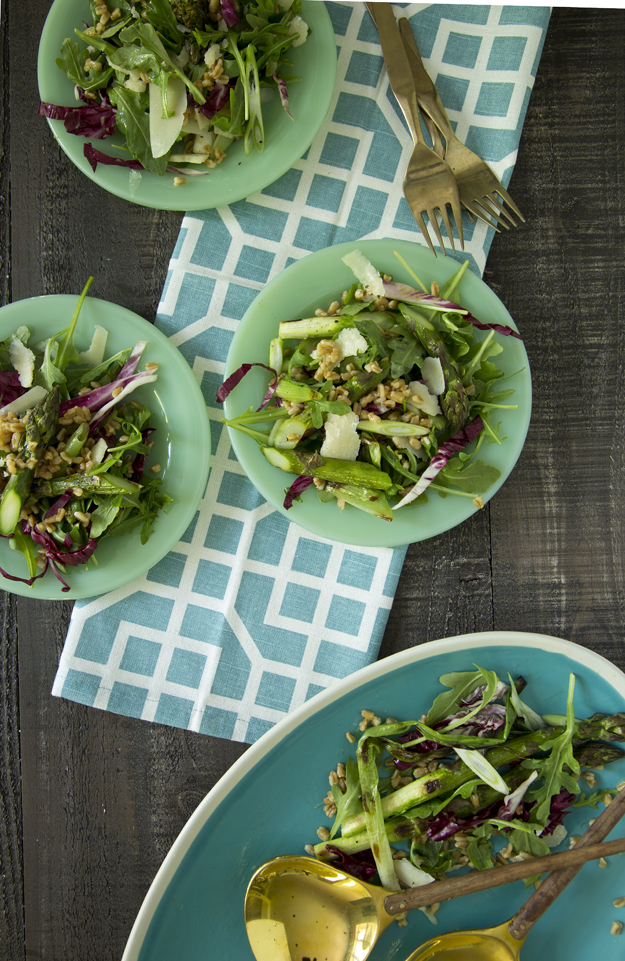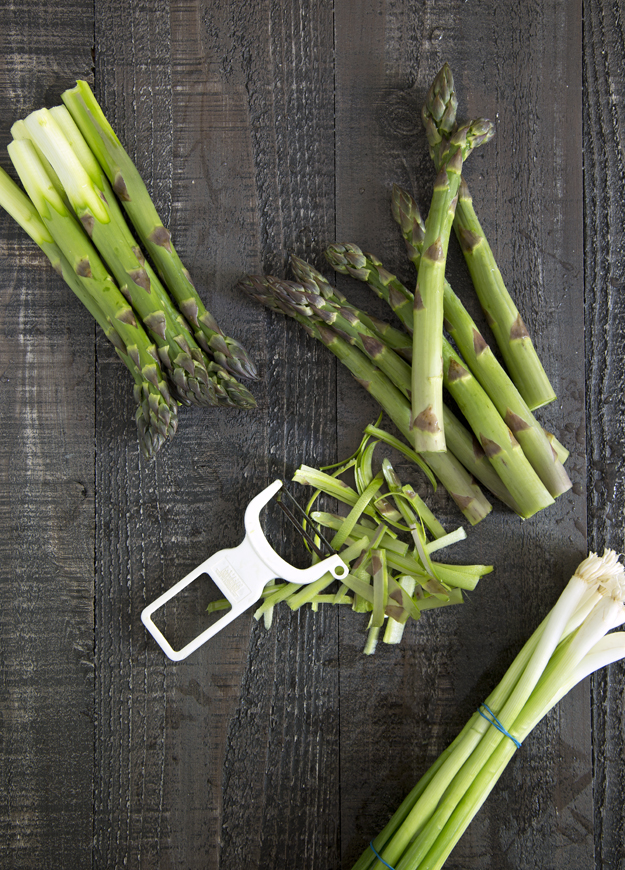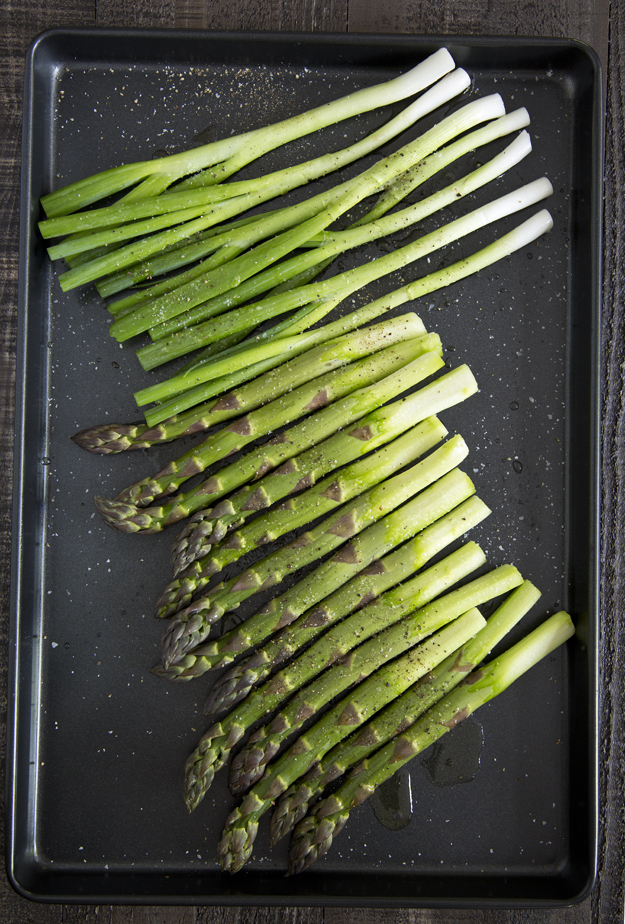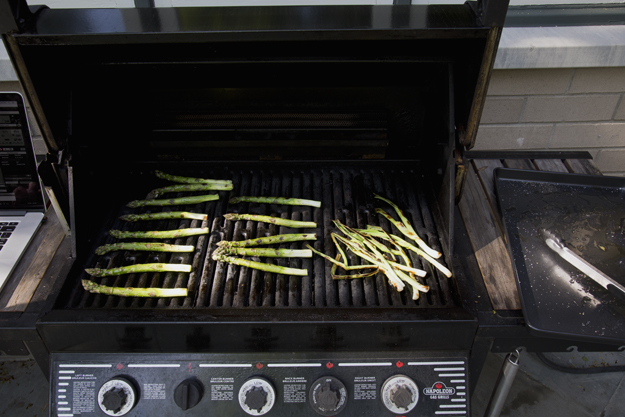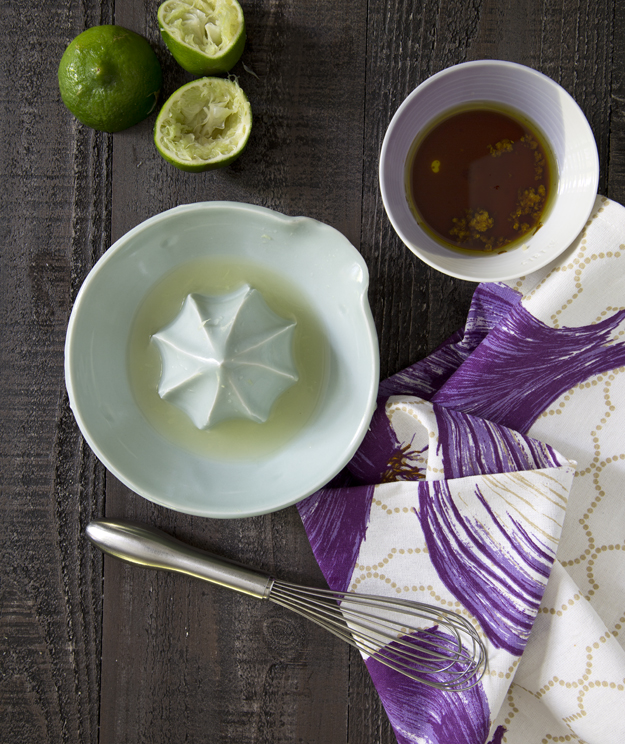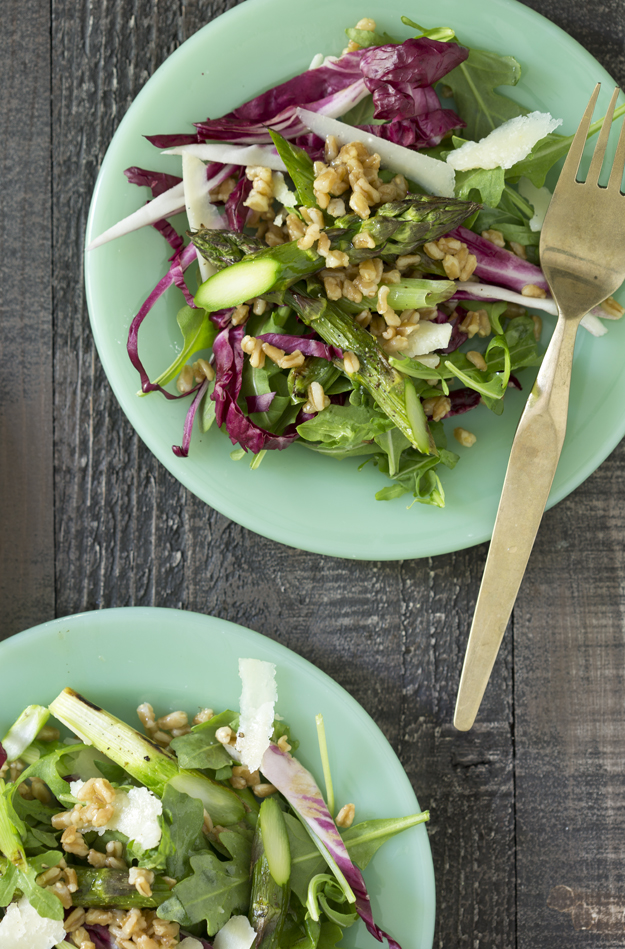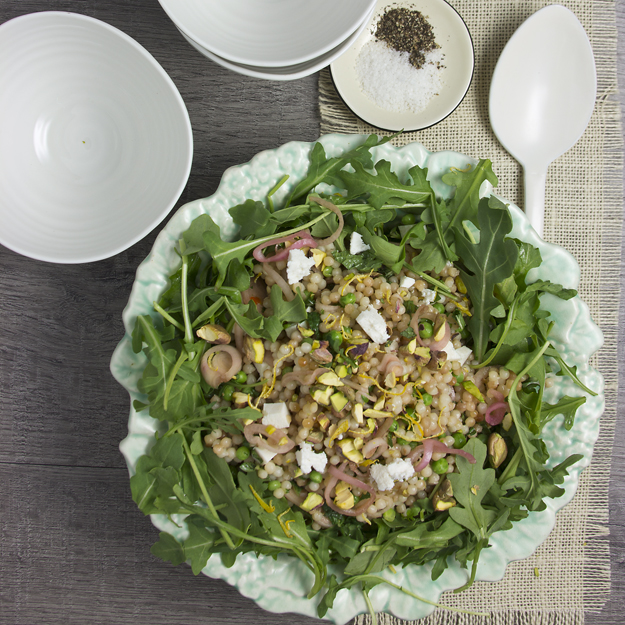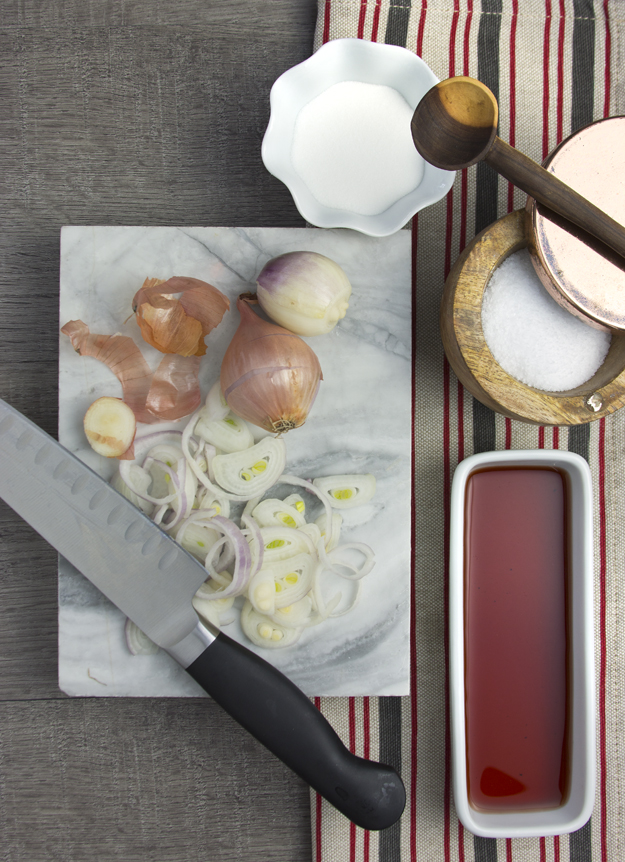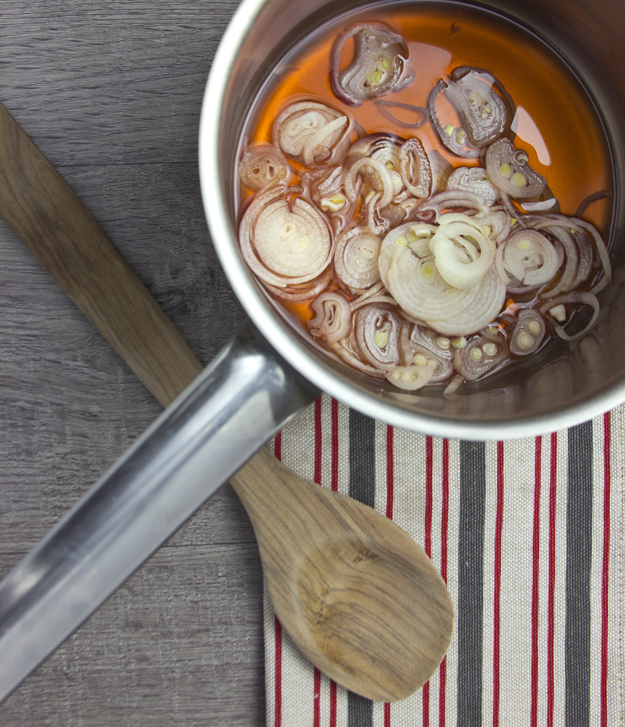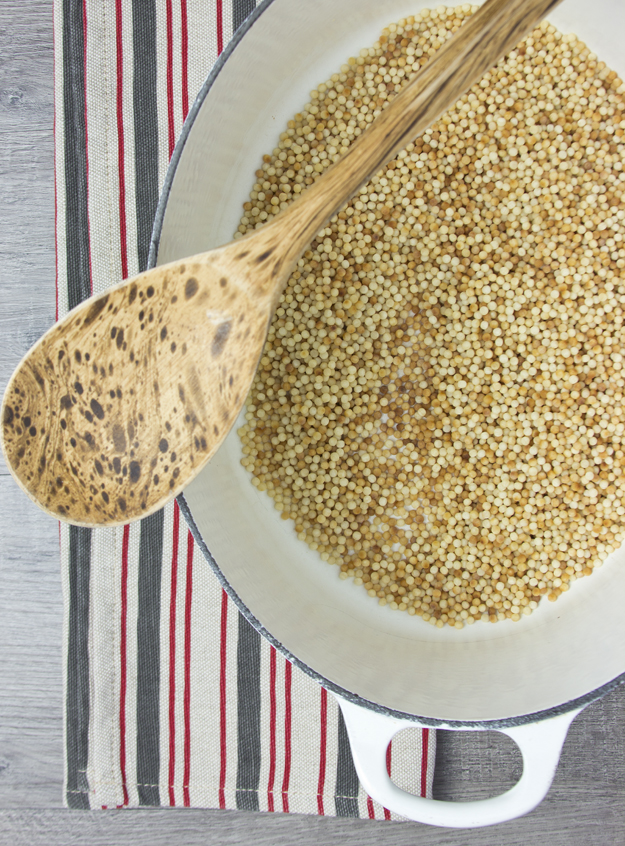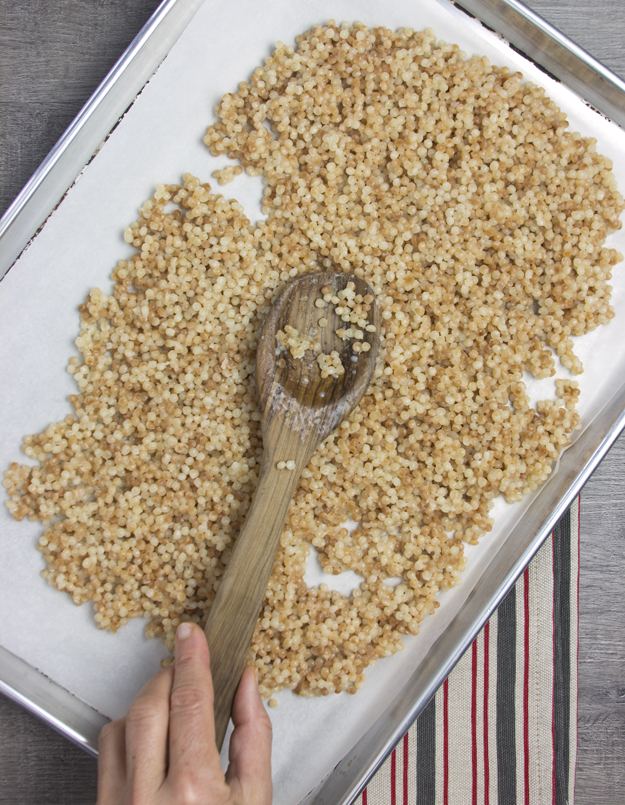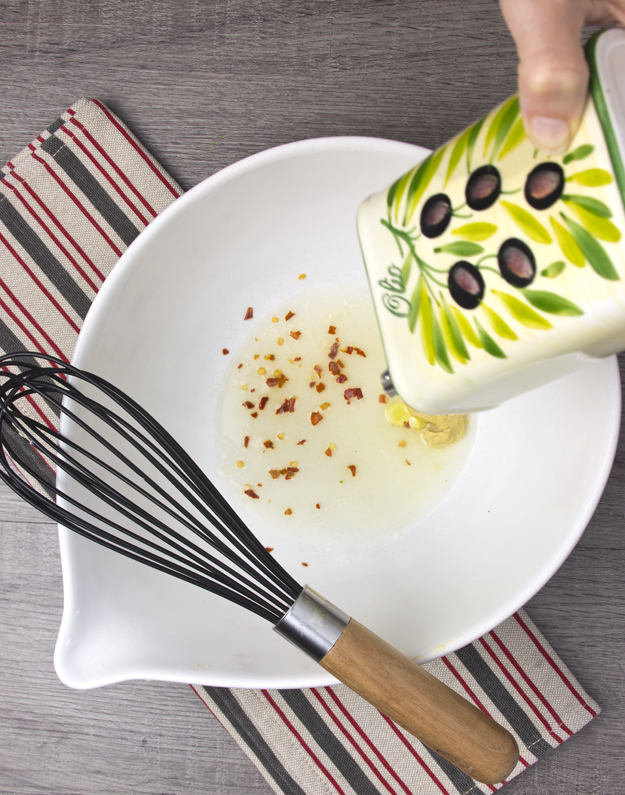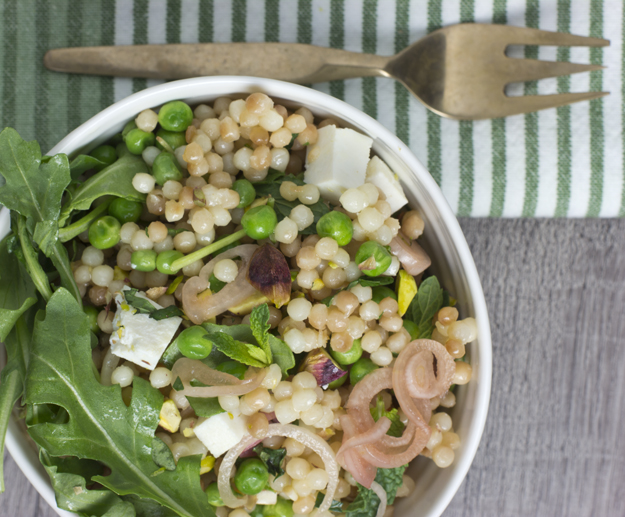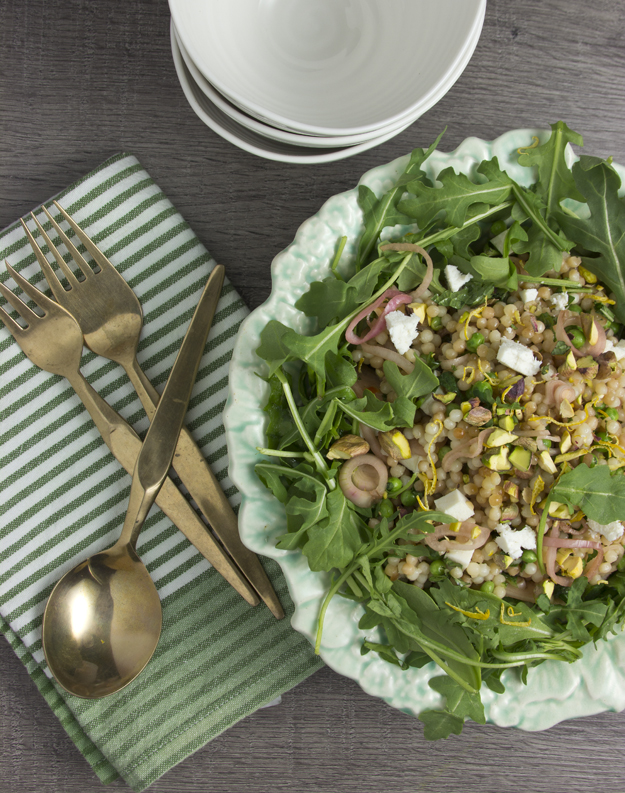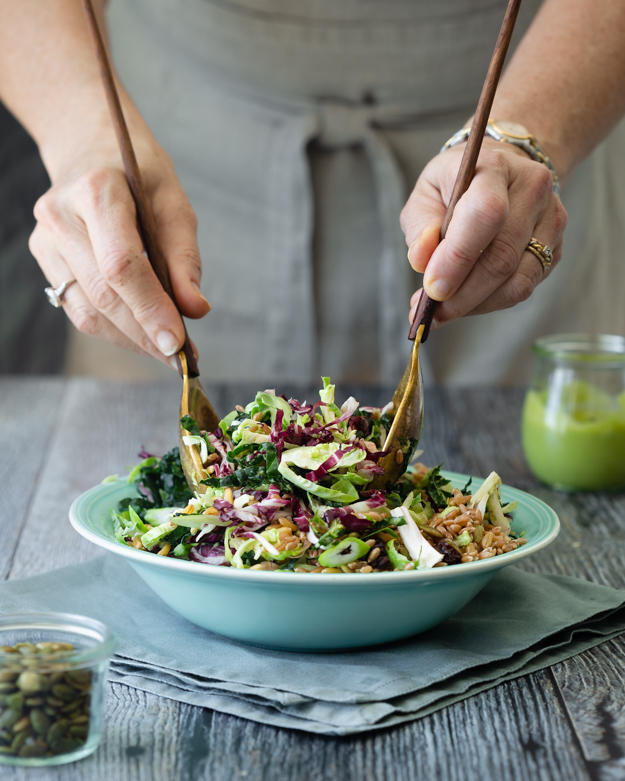
In the 549 posts I have written for this blog, only one, thus far, has contained kale. This will be the second. This scarcity of kale recipes is not by accident. I just didn’t think I liked kale. it was tough and bitter and swallowing it scratched the back of my throat.
Apparently, I was doing it all wrong. I was buying curly kale, and using it raw, in salads. Curly kale is best for blending into smoothies or sauteeing, stews and soups, where the heat can mellow it’s bitter bite.
For eating raw, Tuscan Kale (aka Lacinato Kale or Dinosaur Kale or Cavalo Nero/Black Kale) is a better choice. It is a bit more tender than the curly variety and the flavour, while still quite earthy, has an almost nutty sweetness. You need to remove the stems, slice it quite thin and let it sit in the dressing for about half an hour before serving. That will help to tenderize it.
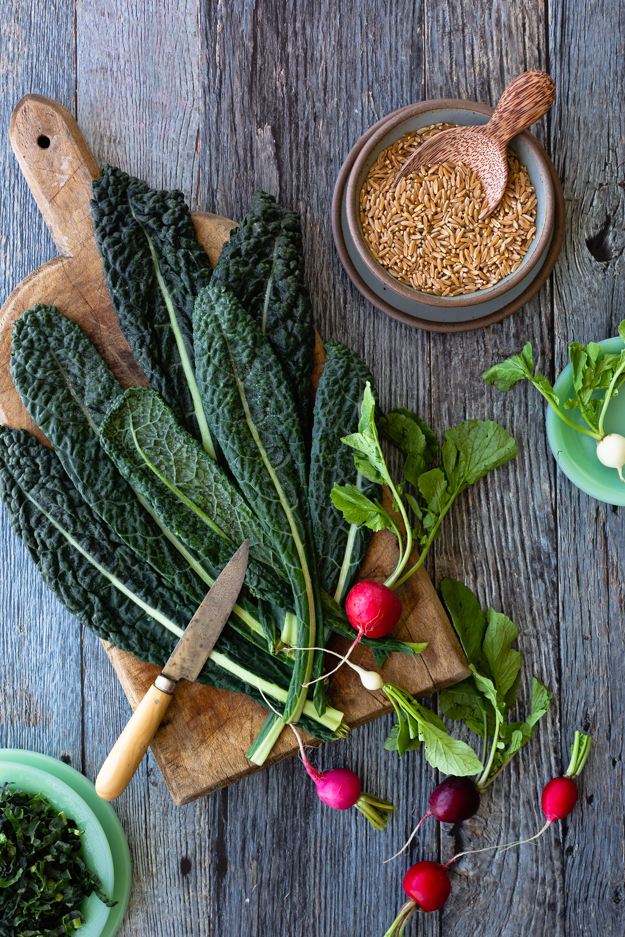
Kamut is an ancient wheat grain, likely originating in Iran. It is reminiscent of farro, but a bit larger in size. It has a firm and chewy texture and a rich buttery flavour. it is nutritional powerhouse. High in fiber, protein, zinc and magnesium, kamut is a fantasic addition to soups and salads. I love the Bob’s Redmill brand, which is available in most healthfood stores , or online.
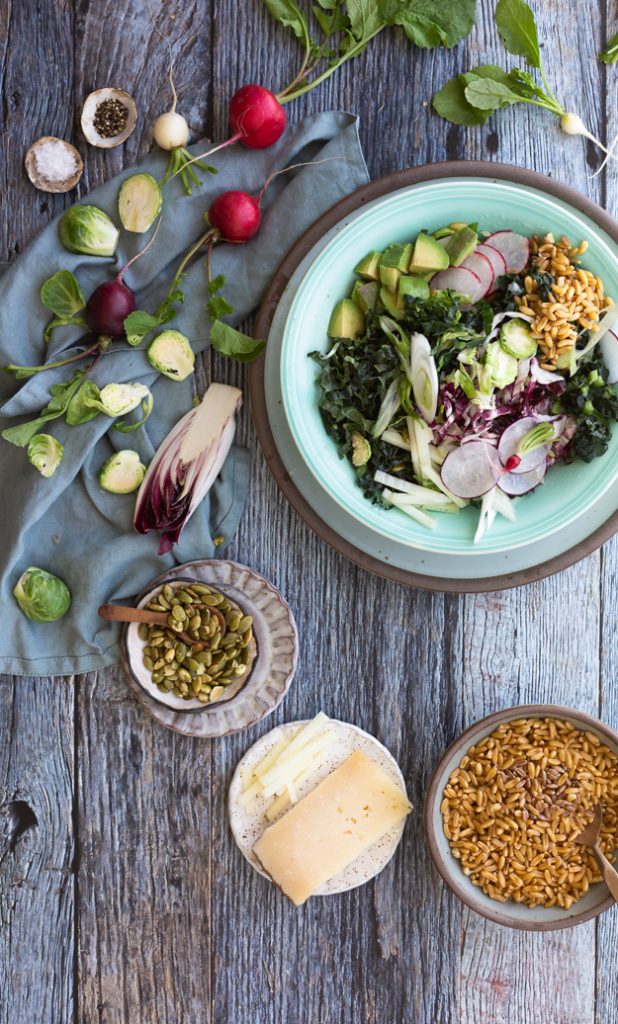
This salad was inspired by and adapted from the “Berkeley Brussels Salad” from pbs.org. You can customize the salad to include what ever is in season and looks good at the market that day. I added some spring onions and radishes, thinly sliced raw Brussels sprouts and some julienned radicchio. If you’re making it as a main course salad, cheese is always a welcome addition. I used manchego, a Spanish sheeps milk cheese. Don’t forget the crunch. I added toasted pumpkin seeds.
The creamy avocado based dressing makes more than you will need, but it keeps well in the fridge for about a week. It’s delicious as a sauce for frilled fish, chicken or vegetables.
Click here to print recipe for

